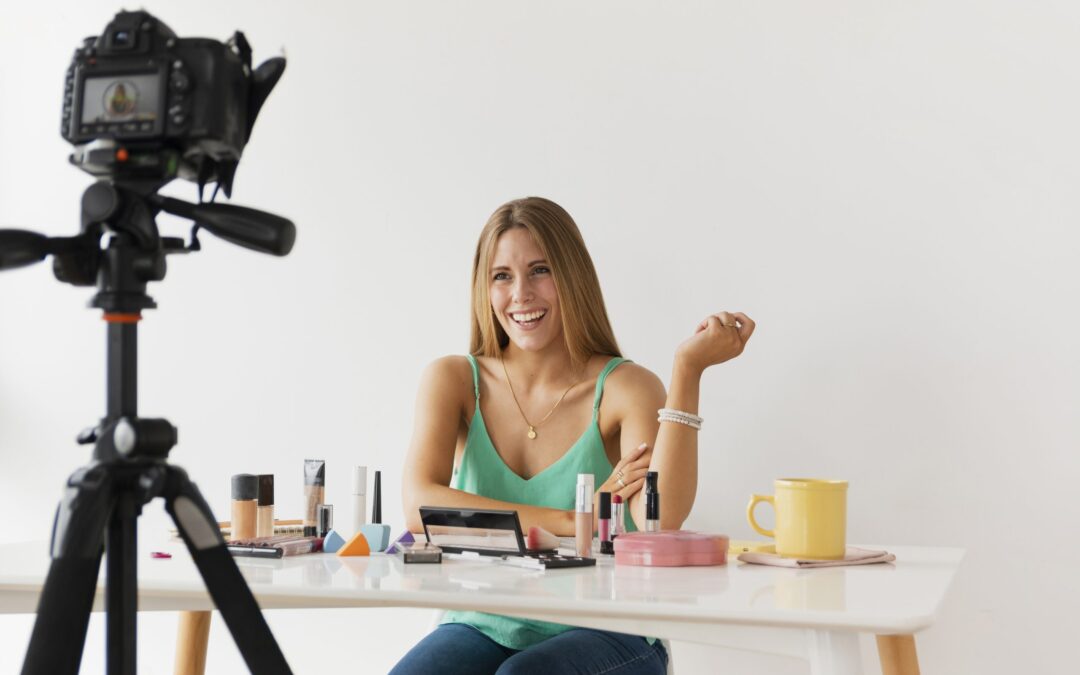The rise of influencer marketing has transformed the way brands connect with consumers, with more than 80 per cent of Australians now on social media.
Sydney-based designer, Ella Barker, 19, launched a handcrafted clothing brand, Garments by El two years ago and is struggling to keep up with consumer demands after leveraging influencer marketing to promote her small business.
“Up to 80 per cent of my sales are a result of influencer promotion,” Ms Barker said.
“As a relatively new, small business, social media influencers have played such a big part in promoting my business to a larger audience, engaging new customers and generating more sales.
“The demand has increased so much since working with influencers, that I’ve had to quit my part-time job.”
Data shows that Ms Barker is not the only business owner benefiting from influencers’ sway.
In 2022, 93 per cent of marketers embraced the power of influencer marketing, with the global influencer marketing industry increasing to a market size of 16.4 billion U.S. dollars – a figure that is expected to climb a further 29 per cent to an estimated 21.1 billion U.S. dollars this year.
Source: The State of Influencer Marketing 2023: Benchmark Report, The Marketing Hub
Marketing and social media specialist at The Marketing Room, Emily Watson, attributed this surge to the efficacy of influencer marketing, stating that influencers are now considered a key component of brands’ promotional strategies.
“It’s a very effective method for brands and they are seeing really good results,” Ms Watson said.
“Over the past two years, the results off the back of brands using influencers has been huge and super tangible.”
A 2023 report published by the Influencer Marketing Hub, highlighted the return on investments (ROI), with brands expected to receive a $5.78 return for every dollar invested in influencer marketing.
Chief executive of social media marketing agency Hypetap, Detch Singh, told the ABC that large companies are allocating up to 10 per cent of their advertising budgets to influencer marketing, with influencer content now surpassing branded content on social media.
“If we test branded content versus influencer content on a particular channel, nine times out of 10 that influencer content will outperform the branded content,” Mr Singh said.
With these results, many smaller, generally newer brands, including Garments by El, are even opting to utilise influencer marketing as their primary marketing method.
“Around 80 to 90 per cent of my marketing budget goes towards influencer marketing,” Ms Barker said.
“Apart from using my Garments By El social media accounts to promote my business and paying for Instagram ads, influencer promotion is the only other marketing strategy that I use.”
The effectiveness of this marketing technique lies in the degree of influence wielded by social media personalities on consumers, with results from a 2021 survey showing that 39 per cent of Australians are more likely to purchase a product promoted by an influencer, and 53 per cent of respondents stating they read influencer reviews and blogs on products or services they were interested in buying.
Yet, some influencers hold greater marketing power than others.
Despite having a smaller following than larger influencers, nano-influencers (1,000 to 10,000 followers) and micro-influencers (10,000 to 50,000 followers), are deemed the most effective in marketing goods and services online.
Boasting the highest follower engagement rate, nano-influencers average an engagement rate of 2.78 per cent on Instagram and 12.6 per cent on TikTok, while micro-influencers maintain an engagement rate of 1.23 per cent and 11.4 per cent, respectively.
Source: State of Influencer Marketing 2023 Report, Hype Auditor
Ms Watson attributed this strong audience connection to the higher levels of authenticity and relatability exhibited by the smaller-scale influencers in comparison to macro-influencers and celebrities.
“The smaller nano and micro-influencers are doing a lot better than the macro influencers now. They have really engaged audiences that trust them and so when brands are using them in the right way and it’s really authentic and genuine, they are seeing really great results,” Ms Watson said.
“Although they have a smaller following, they are much more engaged than the larger ones. With the nano and the micro, their followers are on there to see that influencer’s content and they trust them.”
The effectiveness of nano-influencers and micro-influencers has led to 39 per cent of brands choosing to work with nano-influencers and 30 per cent opting for micro-influencers. Far fewer brands chose to utilise larger influencers, with 19 per cent preferring to work with macro-influencers and just 12 per cent collaborating with mega influencers or celebrities.
Source: The State of Influencer Marketing 2023: Benchmark Report, The Marketing Hub
Having worked with nano, micro and mid-tier influencers, Ms Barker, stated the smaller influencers have consistently delivered lucrative results and proved to be cost-effective for her small business.
“When I first started Garments By El, I began working with nano-influencers, particularly because I knew that as an unestablished brand, I would have more chance of getting in contact with them than bigger influencers and it was a lot more budget-friendly,” Barker said.
“I gained so many new customers from them and they were so much more effective in building my business and social media following, than I originally thought.
“Since my business has gained a little bit more traction, I have started to work with micro and mid-tier influencers, as they have a larger following to promote my brand and a little bit more of a reach, but they still have a high engagement rate compared to the bigger influencers.”
View this post on Instagram
The growth of the influencer marketing industry is expected to continue to provide a multitude of opportunities for small businesses like Garments By El, with experts anticipating the market to reach $84.99 U.S. Billion by 2028.

